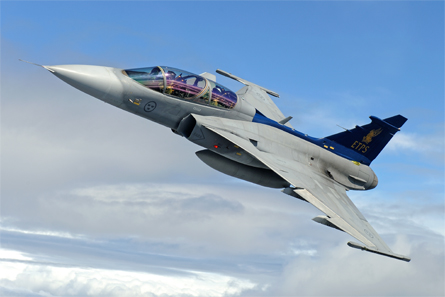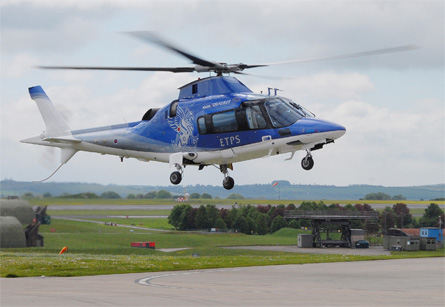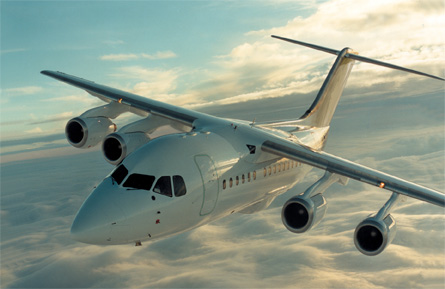Its name may evoke thoughts of a bygone colonial era, but officials in charge of the UK's Empire Test Pilots' School (ETPS) have their sights set firmly on the future as it enters the most significant period of transition in its near 70-year history.
"The ETPS started operating in 1943, and there has been no radical change since then," says chief instructor and rotary wing test pilot tutor Steve Daniels. "We are about to have that radical change."
Best known for training military test pilots and flight-test engineers for the UK armed forces and its allies, the school hopes to attract students from the commercial aerospace sector for its new range of courses.
In common with France's test pilot's school, EPNER, the ETPS is seeking accreditation from the European Aviation Safety Agency, to enable it to offer civilian qualifications in addition to its existing military output.
A visit to the ETPS facilities at the Ministry of Defence site at Boscombe Down in Wiltshire, southwest England, underlines the transition. While photographs of past students line the walls of its main building, a nearby, recently-introduced simulator is changing the way fast jet and helicopter operations are conducted. Outside on the ramp, several new aircraft are also being introduced.
 |
|---|
© Saab |
Fast-jet students get to fly a specially-liveried Gripen B in Sweden |
Activities are split into five main categories. Principal is the 12-month graduate course for military test pilots and flight-test engineers, covering both fixed- and rotary-wing sectors.
This is underpinned by a 25-year long-term partnering agreement with the UK MoD, which sets out a requirement to train at least nine pilots and two Qinetiq-employed engineers a year. Set to run until 2028, this is reviewed every five years to ensure that the customer's needs are being met, while also delivering value for money for the taxpayer.
Numbers are on an upward curve, driven by the UK's heavy use of urgent operational requirement deals to support its aircraft activities in Afghanistan.
"Our orderbook is increasing year on year," says Daniels. "We've gone from 18 to 20 to 24 students in the last three years, and the current expected capacity for 2012 is 28."
This increased demand has been prompted by the rotary-wing sector in particular, which currently accounts for more than its traditional 50:50 split.
Multi-engine transport aircraft specialists are also in demand, while UK fast jet requirements appear set to decline slightly because of the nation's recent fleet rationalisation activity, which has seen its BAE Systems Harrier GR7/9s retired early and the frontline Panavia Tornado GR4 force reduced.
Long-term requirements for the UK test pilot community will also be driven by factors such as British Airways' new pilot recruitment drive, and by the requirements set out by the UK Military Aviation Authority. However, "flight testing by the military, for the military, is not going to stop", says Daniels, formerly a captain in the Royal Navy with operational experience on the Westland Sea King and AgustaWestland AW101 Merlin maritime helicopters.
 |
|---|
© Qinetiq |
Reflecting the growth in demand for rotary-wing instruction, ETPS has purchased a second AgustaWestland AW109E Power. To join a leased example (above), this will enter use by year-end, after its onboard flight test instrumentation has been installed. Other assets include a combined fleet of nine Eurocopter Gazelles, Westland Lynx and Sea Kings.
To support EASA requirements and replace its aged BAC 1-11 and HS748 Andover, an Avro RJ70 and RJ100 are scheduled to enter the Qinetiq fleet, representing a significant investment. A contract for the RJ100 should be signed later this year, with the aircraft to enter use in 2012. The RJ70 will follow later.
 |
|---|
© Qinetiq |
An RJ100 should join the Qinetiq fleet before year-end |
In all, ETPS can use almost 30 of the Qinetiq-owned air fleet. Fixed-wing types include the BAE Hawk T1, variable stability system-equipped ASTRA Hawk, Dassault/Dornier Alpha Jet and Shorts Tucano T1.
Additional access to UK military assets is also available, expected to include Hawker Beechcraft King Air 200s, an additional Tucano and a Tornado GR4 during 2012.
Fast-jet students also get to fly a specially-liveried Saab Gripen B in Sweden during their course, accompanied by a Gripen-qualified ETPS instructor.
With a new EASA framework coming into effect in April 2012, the traditional 12-month graduate course will be split into two blocks from next year.
The first will enable students to achieve the agency's proposed Category 2, or development/basic test pilot or flight-test engineer rating, which will enable them to conduct non-flight envelope-expansion activities.
Candidates not seeking to complete the course in one go will be able to reach this first standard before leaving to gain active experience with the military or a company, before potentially coming back to reach the advanced experimental Category 1 standard.
The same categories will also be applied to commercial candidates, and Daniels sees this market as having strong potential.
"The military and commercial partnership is vital to the success of the school," he says.
The first student to complete a commercial fixed-wing diploma course, in May 2010, was former British Airways Boeing 767 training captain Isabelle de Montet-Geurin. The experience gained at Boscombe Down enabled her to go on to secure a post at Cobham company FR Aviation in Bournemouth, Dorset, southwest England.
During her 13 weeks at the school she flew types including the Tucano, ASTRA Hawk, Beagle Basset, Andover and Harvard, gained experience on the Grob G115 Tutor, and also got to take the controls of an Airbus A380.
 |
|---|
© Qinetiq |
Qinetiq's air fleet provides access to types including the Tucano and Harvard |
"The training I had at ETPS prepared me really well for the job at FR Aviation," she says. "I got the qualification, and now I am getting the experience."
The move towards meeting new European standards is being supported by Daniels' involvement as an EASA flight testing committee member. "We know what EASA wants in terms of quality. Next year we will have a corner of the school as ETPS Civil, with some of the staff to be civilian instructors flying G-registered aircraft," he says.
While it is seeking more students from the commercial aviation sector, international military customers are still vital to the success of ETPS.
About 70% of students on the 2011 graduate course come from overseas, including Australia, the Netherlands, Singapore and the USA. In all, about 30 nations use the long and short courses at Boscombe Down.
Noting that the school hopes to benefit from potential export sales of the Eurofighter Typhoon and Gripen to nations including Brazil, India and Japan, Daniels adds: "our customer base is expanding".
Next year, the graduate course should, for the first time, "stream" fixed-wing pilots and engineers for operating fast jets or multi-engine/heavy aircraft.
Course activities will be split into three main areas - aircraft performance, handling qualities and systems.
Students will also be able to use the full-motion simulator, which was previously located at Qinetiq's Bedford site and employed for tasks including flight-control law development for Lockheed Martin's short take-off and vertical landing F-35B Joint Strike Fighter.
Already in use, the device enables engineers to evaluate flight-control laws for the ASTRA Hawk before flying the jet. "It enhances the flight instructionand provides a better parallel to real world aircraft development and test today, which makes heavy use of simulators," says Qinetiq test pilot Justin Paines.
"We've been very pleased with the way the simulator has been integrated into the school," says Daniels.
Replacement cockpit modules could also be used to support some other aircraft types and helicopters.
In 2012, multi-engine specialists will use the Tucano and RJ100, plus spare capacity on the King Air 200 trainers operated by Royal Air Force 45 Sqn. Rotary-wing students will use Qinetiq's variable stability Basset, which has the ability to mimic the handling qualities of different aircraft types. There is also access to fly instrumented Bell 205 and Bell 412 helicopters operated by Canada's National Research Council.
The one-year graduate course culminates in a major exercise - entitled 'The Preview' - where students fly and report on an unfamiliar aircraft type ranging from the A380 and Douglas DC-3 Dakota to the Boeing F/A-18F Super Hornet. Rotary graduates have access to tandem rotor or unusual types, such as the Mil Mi-2. "That won't change," says Daniels.
Flight activities from Boscombe Down using instrumented aircraft can be monitored from a dedicated telemetry room at the site. The biggest activity supported by the facility involves tracking spin-recovery manoeuvres performed using the Tucano, which take the aircraft beyond its release-to-service boundaries for military use.
"We have a trained safety monitor looking at control input positions, and can radio straight to the aircraft to advise if they see anything abnormal," says flight-test engineer tutor Gordon Stewart. Monitoring such exercises in real-time also allows the school to validate whether intended test points have been properly achieved, or need repeating. "These are important aspects for the flight-test engineer role," Stewart says.
Telemetry equipment is also used to support the rotary-wing course, and in some short courses, by tracking activities such as in-flight engine failures and and auto-rotations.
Head-up display footage from Qinetiq's Alpha Jets (below) can also be viewed live, and its new Avro RJs should have an onboard capability to link with ground staff.
 |
|---|
© Berniec gallery on flightglobal.com/AirSpace |
In addition to its noted long courses, ETPS also delivers a number of short courses, including a civil airworthiness refresher, for experienced pilots such as senior airline captains and tuition in post-maintenance flight testing.
In another development, from 2013 the school will run a course for unmanned air systems (UAS) operators. With UAS expected to play a growing part in aviation, this is an area which should see growth. The MoD is in the process of defining its requirements for the course in terms of student numbers.
The addition of such courses and ongoing measures to align ETPS with the emerging requirements of EASA underline a clear ambition for Daniels and his colleagues.
"Our goal is to be widely acknowledged as the world-leading flight-test school," Daniels says.
Source: Flight International


























